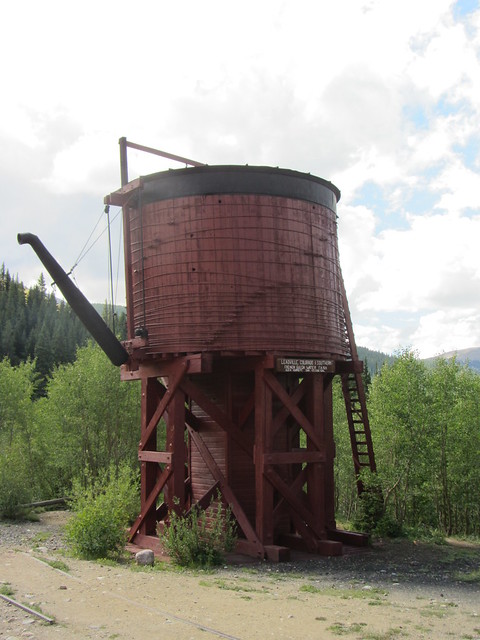Leadville, the highest incorporated city in North America, even the name sounds dangerous, and the town was. Fortunes were made and lost in a heartbeat. And some heartbeats were cut short by mine cave-ins, gun fights, starvation, and cold weather.
The characters in my book A Cowboy’s Fate, take an 1800’s road trip from Denver to Leadville. Despite being occasionally called Cloud City, it was a rough and tumble place, with flashes of cultural enlightenment and high living.
The town definitely had its ups and downs. In 1860 gold was discovered, but that played out quickly. Then in 1877 silver became the magnet drawing thousands back up the mountain.
During its peak, Leadville bragged over 30,000 residents. It became the second largest town in Colorado. With 100 saloons and gambling places, multiple daily and weekly newspapers, and 36 brothels. It was even slated at one time to be the capital.

The Leadville, Colorado & Southern Railway still follows the headwaters of the Arkansas River route.

One of the most famous stories associated with Leadville is the saga of Baby Doe Tabor, and it reads like a tragic soap opera. Previously married and divorced, Elizbeth (Lizzie) McCourt, had already acquired the name Baby Doe and when Horace Tabor saw her, he was enchanted.
John Phillips Sousa performed there, Jack Dempsey boxed on the same stage...the stage which still features a trap door Houdini allegedly used during his famous disappearing act. Susan B. Anthony and Oscar Wilde also tread the boards.

With the repeal of the Silver Act and the panic of 1893 the Tabor’s fortunes were wiped out. Horace died in Denver. Baby Doe returned to Leadville, and although she found religion, she could find no investors for the Matchless Mine. Out of sheer guts and determination, she survived another 35 years, visited only on occasion by her two daughters. During the winter of 1935, after a severe snow storm, she froze to death, surrounded by her ramblings and journal entries. Some called her a madwoman—she was definitely a woman from which legends are born, and Leadville claims her as their own.
In 1895, in an attempt to draw tourists to their town to bolster their flagging economy, Leadville constructed a mammoth ice castle. It opened January 1st 1896. Encompassing 58,000 square feet, it was dubbed the Crystal Palace. The palatial building included an ice skating rink, a merry-go-round, a toboggan run, and several social enterprises, including gambling, restaurants, and dance rooms. Unfortunately, Leadville had a very early thaw in March, which destroyed the most magnificent ice palace in history.
pack burro racing....up a mountain.
I hope my characters, Cody and Britania lived a long and happy life in Leadville. A town where, if you're lucky, dreams can come true.
Facebook https://www.facebook.com/people/Gini-Rifkin-Author/100001680213365
Amazon author https://amzn.to/2R53KA9
Pinterest https://www.pinterest.com/ginirifkin/pins/
Goodreads http://bit.ly/2OnHbrK
Barnes and Noble http://bit.ly/2xPs9S4
AudioBooks https://adbl.co/2OlWbGJ
LinkedIn https://www.linkedin.com/in/gini-rifkin-15950489/
Universal link https://books2read.com/u/3JLGMv
The wild rose press https://wildrosepress.com/?s=rifkin&post_type=product&type_aws=true


















































